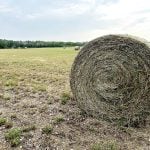MarketsFarm — The ongoing standoff between Russia and the West over Ukraine, along with speculation regarding key interest rates from the U.S. Federal Reserve, were two major factors on the Chicago Board of Trade (CBOT) during the week ended Wednesday.
The potential for a possible Russian invasion of Ukraine had caused a sharp hike in wheat futures, with the March Chicago wheat contract rising 90 U.S. cents over the past week.
However, the price took a small dip on Jan. 26, the day after Ukraine’s President Volodymyr Zelensky said officials in his government do not think an invasion is imminent.
Read Also

U.S. livestock: Feeder cattle hit contract highs on tight supply
Chicago | Reuters – All Chicago Mercantile Exchange feeder cattle futures and most live cattle futures hit contract highs on…
Ryan Ettner, a trader for Allendale Inc. at McHenry, Ill., said it’s hard to tell where wheat will go next.
“Wheat is based on whatever the next headline is, which makes it very hard to predict,” he explained. “Wheat tensions have eased up on the comments from (Tuesday).”
Meanwhile, soybeans began the week decreasing in price, mostly due to rains in South American growing regions, only to see a jump later on. Ettner does not believe weather has much to do with the correction, but rather speculation over whether the U.S. Federal Reserve will raise key interest rates to counter inflation.
The Fed later announced Wednesday it will hold its key interest rate for now, but will likely raise it by 0.25 percentage points in March.
“Trade is anticipating an interest rate hike in March. We already know funds are heavily long in corn on an inflation play,” Ettner said. “(Investors) might be buying beans because they may be already long in corn… Most analysts are all leaning into inflation trade. They’re jumping into grains just to buy commodities, anticipating we’re going to see inflation get even worse.”
Corn prices have stayed relatively steady, being pulled in both directions from wheat and soybeans, according to Ettner. He thinks volatility in the grain markets will continue in the short term.
“You just have to keep watching every headline you can find for trading wheat…This is the kind of stuff we have to watch, which is not the stuff that usually moves grain markets. It’s a little bit harder to track.”
— Adam Peleshaty reports for MarketsFarm from Stonewall, Man.
















